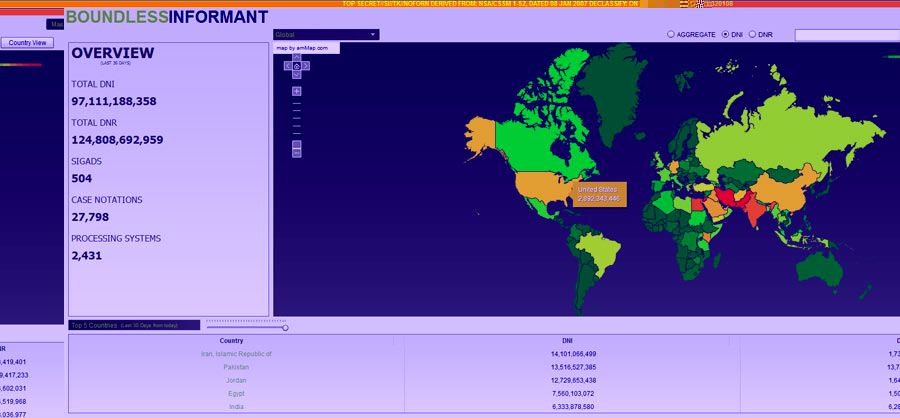June 26, 2013 ☼ cyber security ☼ cyber strategy ☼ Foreign Affairs ☼ India ☼ internet security ☼ Security ☼ surveillance ☼ telecommunications ☼ United States
What should India do about US snooping?
According to reports in The Guardian—based on information illegally divulged by NSA contractor Edward Snowden—we know that India is among the top ten countries that the United States snoops on. In March 2013 alone, one of NSA’s programmes collected 6.3 billion pieces of information from India. (Yes, all the hoopla in the US about spying is limited to outrage over the US government spying on its own citizens. Spying on other countries’ citizens is somehow acceptable to many freedom- and privacy-loving Americans.)
What should the Indian government do about this? Here are some options:
Do nothing. High officials can express their disapproval. The foreign ministry can register a strong written protest. The US ambassador can be told in no uncertain terms that New Delhi is displeased with the snooping. Essentially, nothing actually changes.
Take defensive measures. It is incredibly hard to defend Indian communications networks against the kind of surveillance that the NSA is carrying out. It is impossible to harden all networks—although the government can attempt to move its employees onto more secure platforms. When so many government employees still use Gmail, Hotmail and Yahoo for correspondence with people outside government, there is a lot that the government can do to make official communications more secure. This still leaves public communications heavily vulnerable to snooping by one and all.
Attempt to achieve a balance-of-snooping. Start snooping on ordinary Americans (okay, suspected terrorists only) until the US government gets concerned. Then negotiate a truce to control snooping, much like arms control deals that managed arms races. Even if cyberspace offers asymmetric opportunities, the gap in capacities between India and the United States are mindbogglingly large. It will takes years of sustained investment and effort for the Indian government to do anything that’ll worry the US government enough to want to negotiate. The Chinese might be able to pull this off, though.
If you can’t stop them, join them. Use the India-US strategic partnership to collaborate with the United States in the cyber-surveillance and intelligence domains and use the collaboration to acquire skills, capabilities and technology that India does not currently have. Once such capabilities are acquired, India will have more options.
Update: I make some of these points in an NDTV programme.
Lashkar-e-Taiba vs Tehreek-e-Taliban Pakistan Next
Why public protests are proliferating
© Copyright 2003-2024. Nitin Pai. All Rights Reserved.
